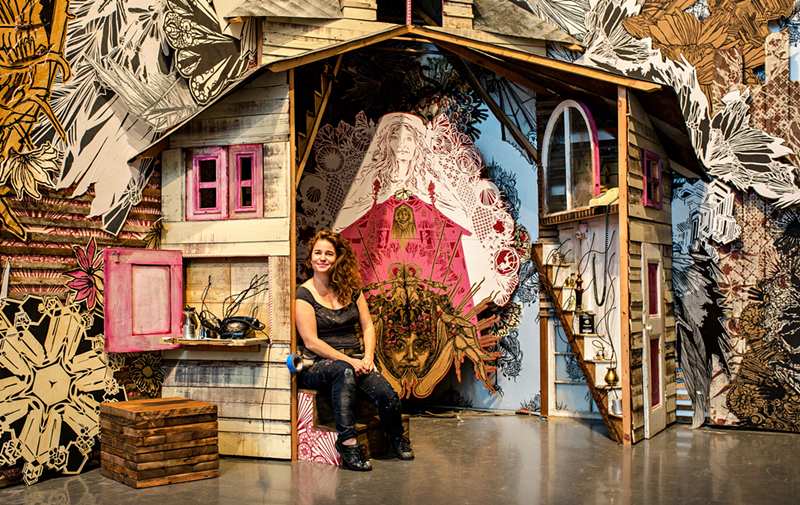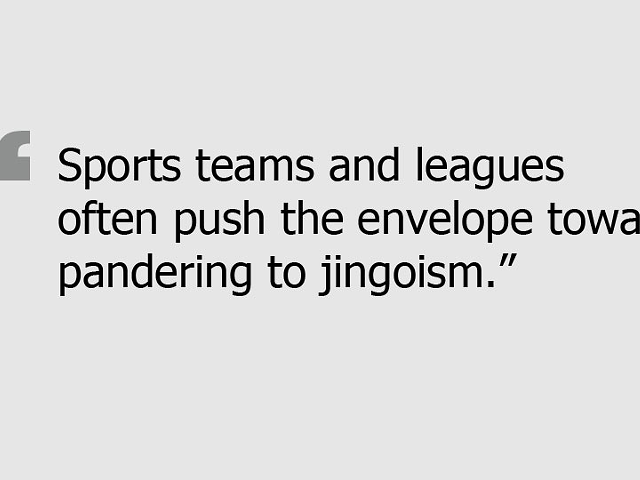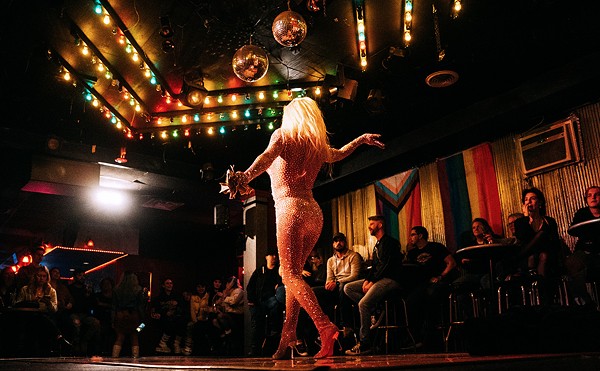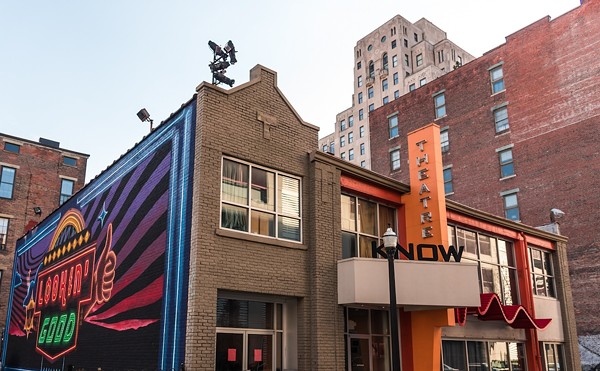“There’s so many different ways that art can function,” says internationally recognized street artist and sculptor Caledonia Curry — better known as Swoon — in a one-on-one preview of her mid-career survey at the Contemporary Arts Center. “In some ways, the role of art is to bring things to consciousness that aren’t conscious — to help you deal with these feelings both individually but also as a culture.”
Never one to shy away from heavy subjects, the Florida-born, New York-based artist has been doing a lot of soul searching and “cracking open the vaults,” she says, for her exhibition The Canyon: 1999-2017, a show that she’s been working on for the better part of six months.
Following on the heels of artist Ugo Rondinone’s let’s start this day again exhibit, a phenomenally popular sensory overload that featured 45 life-size clown sculptures, Swoon’s street-savvy installation-based approach is a natural fit for the CAC’s traditionally challenging architecture. She even named the exhibit with the museum in mind, thinking of the building’s monumental Zaha Hadid-designed spaces as similar to a canyon and as a larger metaphor for the ways one might be able to observe the layers of time in such a geological location, like striations in a rock.
Site specificity has always been important to Swoon — which makes sense for someone who began her art career on the street — so she and a crew of a half-dozen contracted workers and studio regulars have been working in town for 12 hours a day over the past six weeks to build the immersive installation that features her work of nearly two decades. The multi-faceted collection includes a new installation created for the CAC space, restagings of popular past projects (like a raft made out of garbage that floated down the canals in Venice), hand-cut paper, portraits, wheatpaste, wallpaper, pieces of her socially driven work and more.
For The Canyon, Swoon chose to utilize the CAC’s fourth and fifth floors. “I always choose the most specific part of the building,” she says. “I want to make contact with the architecture and appreciate it. I’ve never played with this kind of language before; all these facets and all this modern architecture.”
Her use of the word “language” may be no accident; she often speaks of both her community-based work and the physical manifestations of those projects as “stories” she hopes to tell.
The stories Swoon weaves in The Canyon are about her work in the street — in a mostly chronological “Time Capsule” installation — as well as with smaller groups of at-risk communities around the globe. The show features the first piece in which Swoon began looking at issues of social justice through the lens of art in 2007 when, in crossing the U.S./Mexico border, she saw a large amount of crosses painted on light posts in Juarez, Mexico denoting the number of women murdered in connection with the drug trade.
“It felt very much like (the issue) was being left to Mexico to deal with, but it seemed like something that we also needed to take responsibility for and think about,” she says.
And that moment seems to be a turning point in her practice.
“Once I started looking at the issue through the lens of art, then I started getting invitations from people who were like, ‘Hey, help us think this through,’ ” she says.
Much of Swoon’s work over the past decade has involved ongoing collaborations with communities of people who had a story to tell — a safe house for girls in Kenya, Syrian and Afghani refugees in Sweden and victims of trauma who were struggling with addiction in Philadelphia. In most ways, Swoon’s work tends to celebrate the strength and resilience of the individuals involved and she typically rejects the tragic image because, she says, “I think sometimes we can get numb to it.”
“You can have a story, but how you relay that publicly is another challenge,” she says. “Sometimes people become more human when we see more sides of them. Just having been through a shitty situation doesn’t destroy you as a person. You still have all this richness and beauty that’s part of who you are. And to represent that while representing the tough story is to understand that and see ourselves as whole, or more than the worst things that ever happened to us.”
She says a newer installation in the show — a sculptural portrait entitled “Madea” — may be her favorite work she ever made. She also admits that it is “dark as fuck” and that most of those familiar with her work might be shocked at how blatant and vulnerable she got with the content.
In the piece, she explores the intergenerational legacy of sexual abuse and trauma. Swoon has spoken publicly about both of her parents’ struggles with addiction, but this is the first time she says she’s ever incorporated something so personal in her visual work.
She’s also taken on a brand new medium: a sound collage of audio recordings wired into a vintage switchboard. It serves as an instrument through which she can share her own story, framed by a memory from childhood in which she realized she had been operating much like the aforementioned communication device.
“I felt like I was a switchboard,” Swoon says. “And I purposely crossed all the signals in order to bury that larger conversation with myself.”
That’s the direction her work seems to be taking these days: Instead of tapping into the universal stories of the street or the individuals that make up a community, as she’s done in the past, Swoon has been looking inward for that kernel of truth — drawing upon her knowledge of the different audiences she’s able to reach in those spaces, but also the impact of her own emerging voice.
She admits that in the past she was so focused on working in the street and with communities that until very recently she was mostly apathetic about showing in museums. But she is only the second woman artist to inhabit two floors at the CAC since Tara Donovan’s first major museum survey in 2009, and the gravity of this moment in her career is not lost on the artist.
Swoon began researching the statistics of women being given museum solo shows and was astounded to see the reported number as low as 20 percent.
“Now that I’m looking at this space I’m like, ‘Oh, actually, these are public institutions and it matters who is being given voice in these spaces,’ ” she says. “I’m definitely aware of that and this is a moment that I’m really proud to be stepping into.”
SWOON — THE CANYON: 1999-2017 opens Friday (Sept. 22) with a free-to-all 8-11 p.m. reception at the Contemporary Arts Center. The artist will speak at a 7 p.m. discussion that is free to CAC members. The show will be on view through Feb. 25, 2018. More information: contemporaryartscenter.org.






